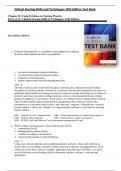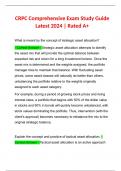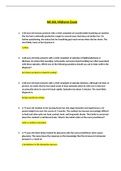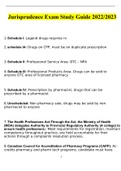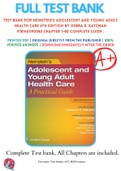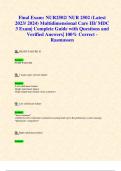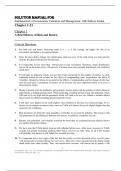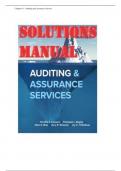Prüfung
Clinical Nursing Skills and Techniques 10th Edition Test Bank by Anne G. Perry , Patricia A. Potter, Wendy R. Ostendorf, Nancy Laplante ISBN-10
- Kurs
- Hochschule
- Book
This isn't a book,a test bank is a collection of pre-written exam questions and answers designed to help educators assess and evaluate students' knowledge and understanding of course material. It serves as a valuable resource for creating quizzes and exams, saving instructors time and ensuring...
[ Mehr anzeigen ]
